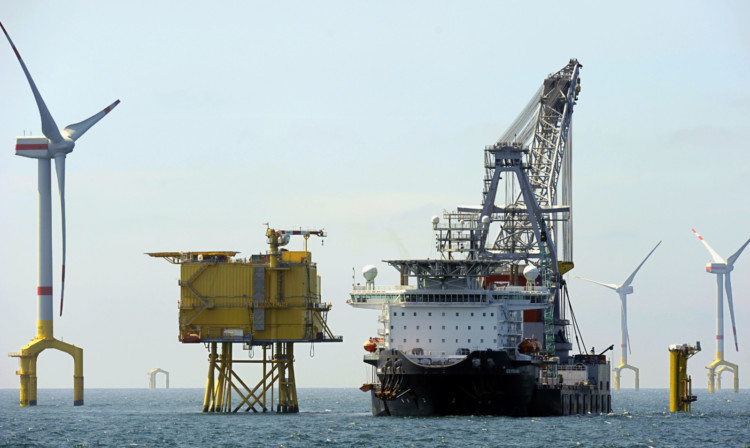Plans for the proposed £10 billion Seagreen windfarm development off Scotland’s east coast are in jeopardy after energy company SSE confirmed it was scaling back its offshore renewables programme.
The Perth-based utility company said it had undertaken a wide-ranging review of its offshore renewables portfolio assets with potential capacity of almost 5GW in response to the UK Government’s announcement on schemes it deemed “provisionally affordable” under the Final Investment Decision Enabling for Renewables (FIDeR) scheme.
SSE said it had concluded it would maintain its investment in its flagship Beatrice project in the Moray Firth, a development that will jointly form the world’s third-largest windfarm alongside the adjacent EDPR-owned Moray Offshore array, but reduce its stake in the field from 75% to 50%.
The company also said it now considered its joint venture Galloper array off the Suffolk coast as financially unviable and it would only support Seagreen and Forewind through to construction consent stage.
The three-phase 3.5GW Seagreen project is by far the largest of three major wind arrays being pursued by developers in the outer firths of Tay and Forth.
SSE and its joint venturer Flour applied for permissions to build the first phase of the Seagreen array the twin Project Alpha and Project Bravo schemes which comprise 75 turbines each and a maximum production capacity of 525MW in October 2012.
Full construction of the initial phase of Seagreen would involve investment in excess of £3bn.
SSE informed investors of its retrenchment decision yesterday, saying they did not currently offer the prospect of a significant return on investment.
“SSE has decided it will continue to support the progress of development work on Seagreen and Forewind with the objective of securing the necessary consents for construction, but that it will not extend beyond that the scope of its commitments to the projects in the near term.
“In particular, SSE does not plan to extend its commitment to the projects until it has achieved sufficient confidence in the viability of the wider UK offshore wind sector.
“SSE had proposed to develop a 690MW offshore windfarm off the coast of Islay and, while it will continue to work with other stakeholders in relation to the development, it will not be investing further in the project in the foreseeable future.
“These decisions are entirely consistent with SSE’s belief that investments should secure returns that are significantly greater than the cost of capital and enhance adjusted earnings per share.”
The windfarm warning came as SSE said it was reining-in its future capital and investment spending from the average £1.5bn to £1.7bn annual outlay it had made since 2010, to a new lower level of approximately £1.3bn from 2015/16 through to 2017/18. It also said it was looking at options to recycle capital through the disposal of non-core assets such as its PFI street-lighting contracts and the sale of onshore wind assets.
It expects to make £100m of annualised efficiency savings by the end of 2015/16.
SSE said its ambitions was to simplify the overall business and, subject to the necessary approvals, the firm’s retail and wholesale divisions will be placed into separate legal entities by next spring.
Lindsay Leask, senior policy manager at industry body Scottish Renewables, said the green energy sector was at a crossroads where decisions were being compromised by continued uncertainty over the investment framework.
“These decisions reinforce the uncertainty which developers have about the future of the offshore wind sector, and reinforce that continued, strong support from both the Scottish and UK governments is absolutely critical to the future of the industry,” she said.
“In turn, the sector needs to continue to work hard to deliver cost reductions which will further prove that offshore wind is an economic alternative to other forms of generation.
“However, we should not forget that we continue to have plans for five major offshore windfarms off Scotland’s east coast, which could provide a significant economic boost to Scotland and businesses across the country, as well as making a massive contribution to cutting carbon emissions.”
